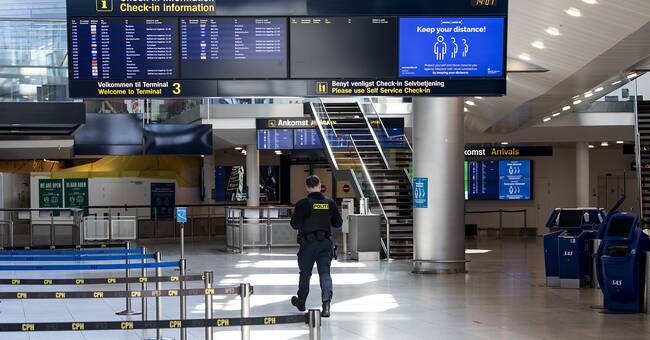Many of us are impatiently waiting for the summer.
But there is probably generally nothing against the wait that plagues the SAS directors - and the employees who still remain.
In February, the SAS management sent out a self-peppered press release that SAS will open 180 lines this summer.
The other day a message came about seven.
My attempts in connection with getting an answer from SAS to the question of how many of the 180 that were hereby opened became completely fruitless.
"For the summer" turned out to have at least been given the meaning "mid-July".
Then half the summer has passed.
Even worse is that people are waiting in the longest to book the few flights that go.
Hence the need for a new loan promise on Wednesday of three billion kronor from the Swedish and Danish state.
If you go to the calculation exercise to sum up the losses since the start of the pandemic, it will be SEK 13 billion in five quarters.
It happens to be about as much as SAS received in new capital last autumn.
The capital is used up as the billion losses continue.
The SAS manager still continues to assure that the money will be enough until the pandemic is over.
The fact that SAS needs an urgent loan is not the same as the fact that capital is about to run out.
And the first big issue for the owners in the future will probably not be urgent capital injections like last autumn.
Rather, it is a question of whether SAS succeeds in transforming itself into a company that survives the pandemic.
Threatened by Teams and Zoom
The entire basis for SAS's existence at the time of its creation, business travel, has suddenly been eroded.
The Swedish global export giants have discovered Teams and Zoom in earnest.
It has earned billions on the forced travel stops, and now wants to keep the fine numbers in the income statements in the future.
The Ericsson boss aims to halve travel.
After the pandemic, Getinge, which makes respirators, among other things, will skip three of four trips for internal meetings.
The tourists remain for SAS.
As such, they have gradually increased in importance for SAS.
A few years ago, the distribution was between 50-50 between business and private travelers, according to surveys.
SAS also plays down the importance of the change that awaits now.
But it is revolutionary.
What SAS needs to do to fulfill its plans is to chase private travelers into the air to a fairly large extent.
This should happen at the same time as the climate aspect of air travel may come into focus as much, or more, as just before the epidemic.
Questioned recreational flying
Surely one can imagine that many pandemic prisoners will happily throw themselves off to Spain this summer as soon as they get the chance.
But in one or two years' time, the view of recreational flying may still have changed.
Business travelers tend to travel Monday-Friday.
Private travelers during weekends, major holidays and in the summer.
This is likely to mean higher staff costs.
For almost ten years, SAS has had recurring battles with the union over deteriorating conditions, with strikes and stranded passengers.
SAS is now having its Irish subsidiary establish a base in Copenhagen to further reduce crew costs.
It is not a bold guess that the pilot union will protest strongly.
Long history
The Swedish state has a long, but reluctant history of rescue billions for SAS.
In the autumn, it was 3.7 billion.
Wallenberg, for whose directors and global export company SAS was once started, went in with a more modest 259 million.
And the question is whether any of them in the future can justify capital contributions to a SAS that mostly flies holiday travelers and is hardly needed anymore to keep the export industry going.

